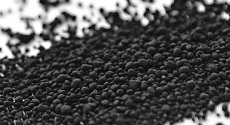
The global carbon black market is expected to grow at a CAGR of 3.5% to 4.0% until 2022 according to Beroe’s market intelligence report. 61% of the supply market is in Asia while North America and the EU have a supply market share of 11% and 13% respectively. The top global suppliers in the carbon black industry are Orion Engineered Carbons, Birla Carbon, and Cabot Corporation. The capacity of the global carbon black is 15.78 MMT. Here are the top 6 growth drivers and 3 constraints that you should know.
Carbon Black Market Drivers
The automotive industry is the biggest carbon black industry driver. There are many uses of carbon black in the automotive industry, especially tires. Carbon black material is useful for making the sidewalls, the inner liners, and treads of tires. The tire industry is the biggest driving factor in the market, and this is true, especially in developing countries. Carbon black’s property of providing and improving the strength along with durability are top characteristics that make it an excellent choice for various purposes and applications.
Carbon black is useful in the manufacturing processes too as it has applications in the rubber industry, which has helped to boost the market growth in various regions. For example, carbon black has been found to be useful in a range of extruded industrial products made of rubber. In addition, molded industrial rubber products require carbon black, which is another growth factor of the carbon black market. Examples include hoses, air springs, gaskets, grommets, belts, and certain types of conveyor wheels.
One of the most important applications of carbon black is in the paints and coatings industry. Carbon black is useful because it is used as an additive in jet black paints. Carbon black has protective coating properties which make it one of the most sought after materials. It has been found to be useful in absorbing UV light which is a major application. Moreover, carbon black is used to increase the durability of the coating which has been another driving factor of the market. These properties are making it widely useful in the industry and the demand is increasing.
The construction sector is an important driver of the carbon black market. When you mix cement and carbon black, then the properties of the two merged products are enhanced. That is, there is better uniformity and the surface hardness is improved. In addition, the compressive strength and tensile strength improves as a result of using carbon black as one of the components. Carbon black is useful in the construction industry as it provides resistance to long-term aging. Carbon black is used for paving stones and roof tiles as well.
There has been an increase in the demand for specialty carbon black which is also known as pigment black. Specialty carbon black is known to be the purest form of carbon black and its characteristics are being known to be helpful in a range of applications. Beroe’s report states that this demand will drive the carbon black industry to grow at least until 2022. As demand will increase, the carbon black production will increase too. One of the applications of the specialty carbon black is metallurgy and cables.
The increase in demand for carbon black and carbon black process is the leading factor for the growth of the market. While the specialty carbon black is in high demand, it provides a higher margin for suppliers compared to carbon black. The specialty carbon black market is flourishing like never before and suppliers are taking note of that. In addition, many suppliers are doing either of two things. They are either increasing their production capacities. Else, they are focusing on specialty carbon black instead of standard carbon black.
Carbon Black Market Constraints
Environmental regulations with regards to carbon emissions have been on the rise, and these can act as constraints to the carbon black market. For example, in the US, carbon black producers have shifted their focus on increasing production in plants that are located in Asia so that domestic demands can be met according to Beroe’s market intelligence reports. Environmental regulations can have a bigger impact on the market in the future.
Carbon black has lower profit margins and so this can have an impact on the carbon black industry as supply can decrease. In fact, profit margins that are low have started to affect many regions as suppliers are decreasing their carbon black capacities. This constraint might not have a really big impact in the future because there are other regions where this is not the case and the supply is continuously more than demand.
The unpredictability of raw material prices is a major concern for many which can affect the carbon black market. This is one of the constraints that can pose a threat to the market in the future as prices can change. Another constraint is the availability of other materials that can be used instead. This can drive the demand for carbon black lower and can affect the global market in the long run too.






